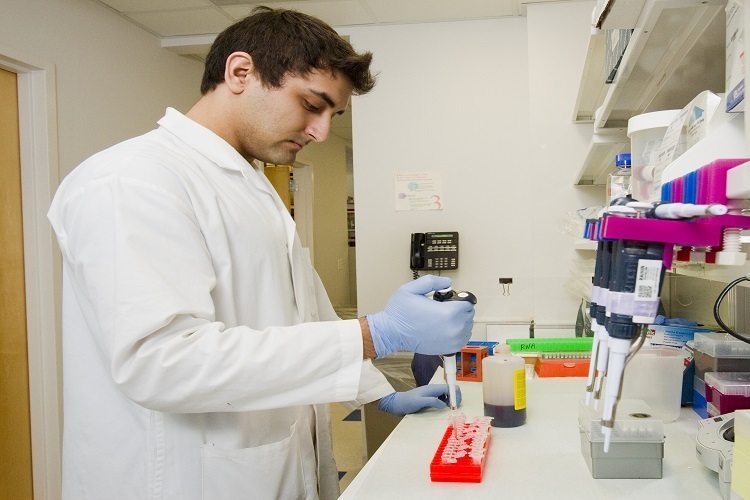Drug abuse is a global problem, but it is most acute in the United States. According to the US National Center for Drug Abuse Statistics (NCDAS), the following eight types of legal and illegal drugs are most commonly consumed – cannabis, alcohol, cocaine, opioids, methamphetamine, cannabis, heroin, and legal prescription drug use.
In a country where people spend nearly a third of their waking lives working, this is bad news. And this is why companies across industry verticals strictly adhere to employee drug testing standards of the Federal and respective local governments.
Drug testing is most routine in the manufacturing sector, where workers operate heavy equipment, deal with hazardous materials, and drive around huge vehicles. Organizations are responsible for employee safety, and drug testing is one way to achieve that. However, what are the many benefits of this practice? Let’s find out.
Table of Contents
1. Worker Safety
The US National Council on Alcoholism and Drug Dependence reveals that drug-induced workplace accidents are most common among construction and manufacturing sector workers.
Unlike an office desk job where the worst possible disaster could be a paper cut, manufacturing sector injuries can become a matter of life and death. Through routine drug testing measures, you will strengthen workplace safety for everyone involved.
This is because, in most cases, a serious accident follows major drug abuse.
2. Reduced Abuse and Turnover
Sadly, drug use onsite is increasing. Unless businesses establish strict drug screening tests, workers feel free to consume drugs of their choice. This threatens their well-being and those of others.
Workers are less likely to commit an infraction when they know the testing procedures and consequences in place. Not only that, but drug abusers are also more likely to switch jobs frequently. Organizations with regular drug testing only have high-quality employees in place.
This brings down employee turnover rates.
3. Greater Peace
It is not uncommon to find drug abusers restless and unable to settle on their seats. This can be dangerous, especially if they work with heavy machinery.
Besides, narcotics can interfere with a person’s mood and reasoning capabilities. As a result, they may display sudden outbursts and impulsive fits of rage. No wonder employees who abuse drugs are often involved in verbal assaults and violent fights.
With a proper drug policy in place, you will reduce the occurrence of such events. Naturally, workplace peace will improve.
4. Reduced Absenteeism
While worker absenteeism can result from several reasons, the most common is substance abuse. Such employees frequently skip work, call in sick leaves, and end up bedridden due to injuries.
There have also been cases where workers simply disappeared after extended lunch breaks. That is alarming, to say the least. All such losses are borne by the respective organization. Such instances are reduced with pre-employment and suspicion-based drug testing policies.
5. Improved Productivity
Did you know that US companies lose around $25 billion each year simply due to workplace drug abuse? The losses are primarily borne in terms of absenteeism and loss of productivity. Even science proves that substance abuse is directly proportional to loss of productivity and apathy toward work.
It’s common to find employees who are drug abusers to be late for work and face concentration issues. Not only that, but such workers also apply for sick leaves often and are missing from their seats.
For such repeat offenders, suspicion-based drug tests can be conducted. They can receive help or be sent off, thereby improving overall team productivity.
6. Better Organizational Reputation
It is every organization’s responsibility to ensure its workers are safe during work hours and within the work premises. Though it is true that all accidents cannot be prevented, a strict drug policy in place sends out the message that you care.
Once the pre-employment drug screening is over, your organization is less likely to have employees who are drug abusers. Not only that but as your company gains a reputation for strict drug policy compliance, and substance abusers will not consider applying.
This will naturally make the premises safer and improve organizational credibility in the market.
Few Common Workplace Drug Testing Scenarios
As your organization formulates its drug testing policy, keep in mind the different scenarios in which this practice becomes vital. Given below are a few common scenarios where drug testing is conducted in the manufacturing sector –
- The pre-employment drug testing (most common)
- Random drug testing is where a select random percentage of people are tested
- The reasonable suspicion drug testing in case an employee is often absent or entering too many sick days
- The post-accident testing is to ensure everything’s safe
- The return-to-duty testing after an employee shows up post-long-leave
- The periodic drug testing maintains safety and order
- The blanket testing in which everyone is tested randomly
There are different kinds of drug tests to ensure workplace safety, including saliva, urine, and oral fluid tests.
The Bottom Line
By establishing strict drug policies, your organization can keep several problems at bay. Out of these, the two most pressing issues are safety and worker relationships.
As you see fewer accidents, fewer impaired workers, and stronger workplace relationships, the many benefits of drug testing will become more tangible. However, you must ensure you collaborate with reliable occupational health services. For instance – Health Street offers different manufacturing industry drug testing that is in line with Occupational Safety and Health Administration (OSHA)’s testing standards.
When you collaborate with the right partner, you can rest assured of a safe and drug-free workplace!

